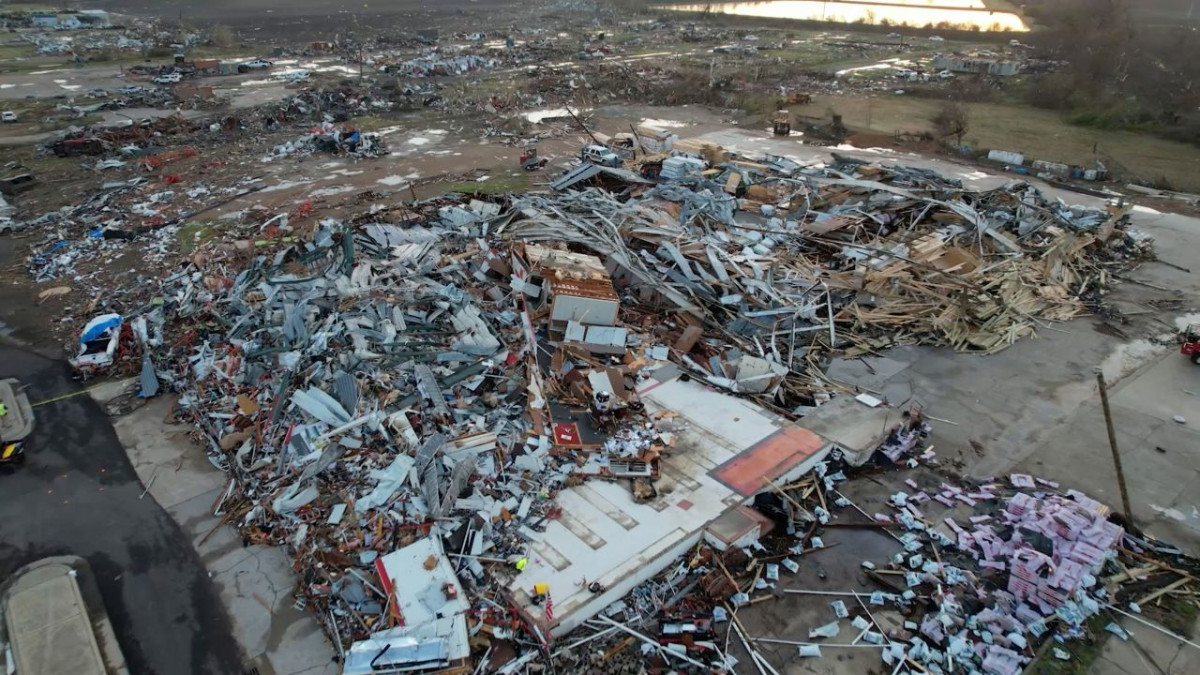(Photo Courtesy of CNN) “Damage from Rolling Fork, Mississippi, which was hit by an EF-4 tornado on March 24th.”
Tanner Hume
Connector Editor
On Friday, March 24th, the southern United States was entangled in a tornado outbreak that spanned from Texas to South Carolina. By far, the hardest hit was the state of Mississippi, with multiple long-tracked violent and destructive tornadoes affecting the state, killing 26 and injuring hundreds.
“These events are more common in the central U.S. than anywhere else in the world,” said Dr. Christopher Skinner, who is an assistant professor in the environmental science field. “Even so, people can be caught off-guard. Whether we are talking about tornado alley or even Massachusetts, everyone needs to know what to do in the event of severe weather.”
Tornado Alley is a region in the central United States, spanning from North Texas up to South Dakota. An area that is so conducive to tornadoes. Another area prone to tornadoes in the United States is Dixie Alley, where Mississippi lies. These two areas singlehandedly generate more tornadoes than anywhere else on the planet.
The tornadoes rolled through Mississippi, causing devastating damage. Sweeping homes right off of their foundation, tossing cars and trucks through the air, snapping and debarking trees, everything imaginable. But during these events, people tend to “jump the gun” and predict what these tornadoes might be rated on the Enhanced Fujita scale, the scale that is used to rank tornadoes in the United States and Canada.
“Damage reports are the official way a tornado is rated. Based on the damage, trained meteorologists can estimate the strength of the tornado,” said Dr. Skinner. “It is a very challenging job to relate damage to tornado strength, and it can take a lot of time. The moments during and immediately after a tornado are stressful and chaotic. To ensure the rating is as accurate as possible requires several days if not longer.”
The surveying of storm damage is a multi-step process that each National Weather Service office must undergo in order to give an approximate rating. In the communities of Rolling Fork and Silver City, the National Weather Service Office in Jackson, Mississippi gave the singular tornado that devastated these two communities an EF-4 rating. They gave an EF-3 rating to another tornado from the same storm that hit the city of Winona, Mississippi. The National Weather Service Office in Memphis, Tennessee (the NWS office that oversees northern Mississippi) gave the tornado that devastated the cities of New Wren and Amory an EF-3 rating.
It is always important to see what the weather is like in the coming days, as any hint of trouble in the forecast can give tons of people time to prepare and make the proper plans to remain safe. “Everyone should have a good sense of whether or not severe weather is forecasted for the day. Check the forecast from your local weather service office every day when you wake up (even the apps on your phone are pretty good these days) and it takes less than a minute,” says Dr. Skinner. “Severe weather models are pretty good these days, but no forecast model is perfect, so you’ll want to sign up for severe weather alerts on your phone so you are informed as the day progresses. A severe weather alert on your phone will happen much earlier than an outdoor siren, and it could save your life.”
The warning systems in Mississippi seemed to work very well, as many people got the warnings through various means, and were able to take the necessary precautions to keep their families and themselves safe. As mentioned earlier, 26 people tragically lost their lives to these vicious storms as they rolled through and hundreds more were injured as a result.
Regardless of the type of severe weather people may face, whether it be a tornado, strong straight-line winds or even large hail, Dr. Skinner provides some helpful tips to remain safe, as he says “You should have an emergency kit in your home and in your car, and you should know where to go in your home, school, dorm or your workplace if a tornado occurs. Your best bet is a basement. If the building you are in doesn’t have a basement you want to go to the center of the building and stay away from windows. If you are stuck outside and there is no shelter, you should find a low-lying area that will hopefully protect you from flying debris. Things can be very chaotic during and after severe weather, and it will help if you have a designated meeting spot to check in with family/friends. That way, in case electricity/communication is limited, you’ll know where to go.”




